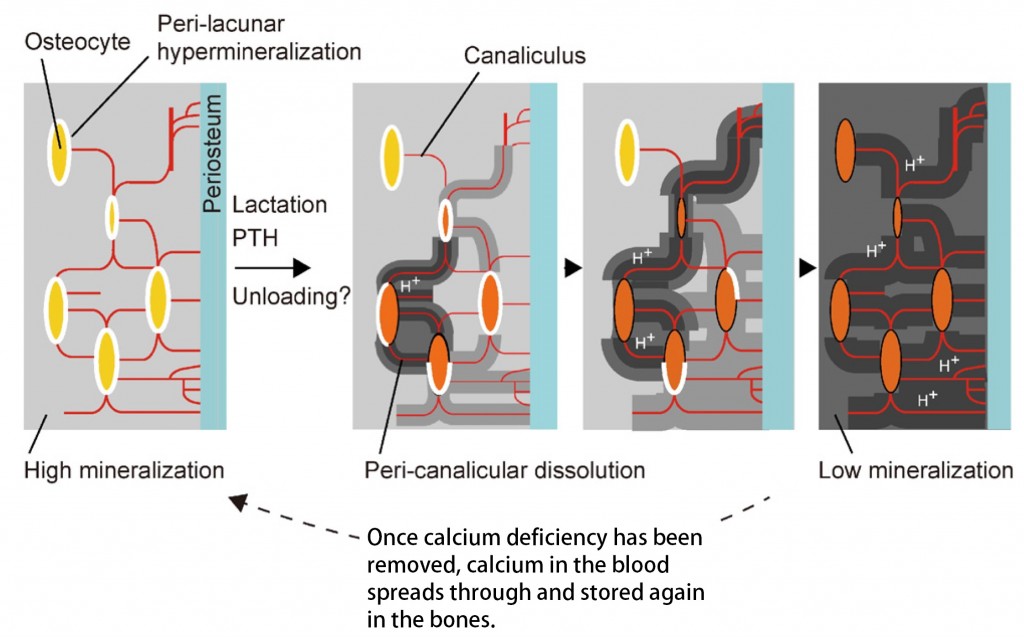Discover a new bone calcium dissolution mechanism
Research Press Release | March 28, 2016
The world’s first observation: the phenomenon which calcium seeping out from the inside of bones is observed by high sensitivity three-dimensional X-ray microscope.
|
Key Points |
A new bone calcium dissolution mechanism is found with a high sensitivity three-dimensional X-ray microscope by the research group of Dr. Nobuhito Nango (RATOC System Engineering Co., Ltd.), Assistant Prof. Tomoka Hasegawa (Graduate School of Dentistry, Hokkaido University), Prof. Atsushi Momose (Institute of Multidisciplinary Research for Advanced Materials, Tohoku University), and Prof. Koichi Matsuo (Laboratory of Cell and Tissue Biology, Keio University School of Medicine). It is believed that osteoclasts start dissolving the bone surface to supply calcium in the blood when the calcium concentration is reduced. However, we define that bone cells has a function to dissolve calcium from inside the bone while maintaining the bone shape and to release it into the blood using millions of canaliculi [Figure 1]. Since the calcium dissolution and cumulative action by bone cells-canaliculi network are revealed by our research, it is expected to lead to new treatments or prevention methods of bone related disease. |
|

Figure 1 Calcium dissolution and recovery process around canaliculi extending from bone cells. |
||
|
Background |
Bone cells, the egg-shaped (oval) cells with a length of about 20 μm, extend their dozens of fine tunnels, which are referred to as canaliculi in all directions in the bone and transmit signals to each other. Since canaliculi are connected with capillary vessels, bone marrow, and bone surface, bone cells make osteoclasts work for removing abnormalities such as fractures and cracks. Subsequently, osteoblasts play a role to repair those removed parts to restore its original shape. On the other hand, osteoclasts have been said to have a role to work for supplying calcium in the blood by dissolving bone surface to maintain the concentration when calcium concentration level is decreased. Since it is proven that the artificial mouse without osteoclasts still lives, another mechanism responsible for maintaining calcium concentration has been suggested. |
|
|
Anticipated Outcomes |
Many of osteoporosis therapeutic agents have a function to suppress bone destruction action by osteoclasts. However, due to the fact that old bones are remained when the function of bone to be reborn is suppressed, this would be the side effect of resulting in producing fragile bones. By this outcome, by controlling both the effect accompanied in bone destruction by osteoclasts and the effect which does not accompanied in bone destruction by bone cells, it is expected to develop the treatment methods which do not involve any side effects in the future. |
|
| Inquiries |
Assitant Professor Tomoka HASEGAWA hasegawa[at]den.hokudai.ac.jp |
|
|
Japanese Link |
新たな骨カルシウム溶解メカニズムを発見 高感度三次元X線顕微鏡でカルシウムが骨内部から染み出している姿を世界で初めて観察 (03.04.2016) | |
|
Publications |
Osteocyte-directed bone demineralization along canaliculi, BONE (12.17.2015) |
|
